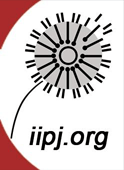Article Title
The Social Distribution of Distress and Well-Being in the Canadian Aboriginal Population Living Off Reserve
Abstract
This article examines how the social structure distributes risk and protective factors and mental health outcomes within the off reserve Aboriginal population in Canada. It uses the stress process model, a prominent model in the sociology of mental health, to explore pathways between social status, stress, coping resources, and mental health outcomes. Path analyses are used to decompose total effects on distress and well-being into direct and indirect or mediating pathways. The results suggest that stress, mastery, and social support are important mediators between social status and mental health outcomes. Stress appears to be a stronger contributor to distress while mastery and social support are of higher relative importance to well-being.
Creative Commons License

This work is licensed under a Creative Commons Attribution-Noncommercial-No Derivative Works 4.0 License.
Recommended Citation
Wingert, S.
(2011).
The Social Distribution of Distress and Well-Being in the Canadian Aboriginal Population Living Off Reserve. The International Indigenous Policy Journal, 2(1)
. Retrieved from: https://ir.lib.uwo.ca/iipj/vol2/iss1/4
DOI: 10.18584/iipj.2011.2.1.4

- Citations
- Citation Indexes: 6
- Policy Citations: 1
- Usage
- Downloads: 988
- Abstract Views: 422
- Captures
- Readers: 23
